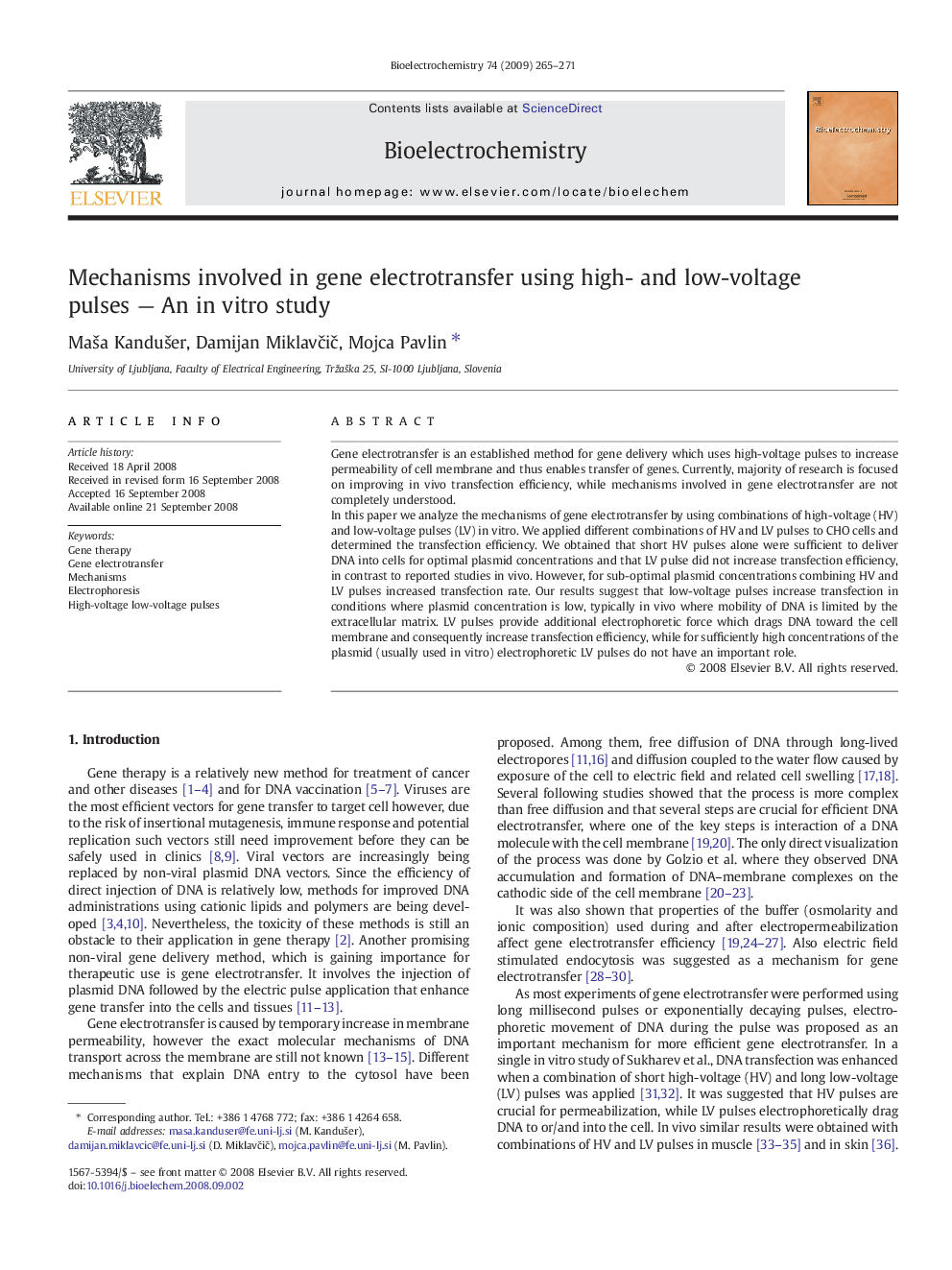| کد مقاله | کد نشریه | سال انتشار | مقاله انگلیسی | نسخه تمام متن |
|---|---|---|---|---|
| 1267461 | 972348 | 2009 | 7 صفحه PDF | دانلود رایگان |

Gene electrotransfer is an established method for gene delivery which uses high-voltage pulses to increase permeability of cell membrane and thus enables transfer of genes. Currently, majority of research is focused on improving in vivo transfection efficiency, while mechanisms involved in gene electrotransfer are not completely understood.In this paper we analyze the mechanisms of gene electrotransfer by using combinations of high-voltage (HV) and low-voltage pulses (LV) in vitro. We applied different combinations of HV and LV pulses to CHO cells and determined the transfection efficiency. We obtained that short HV pulses alone were sufficient to deliver DNA into cells for optimal plasmid concentrations and that LV pulse did not increase transfection efficiency, in contrast to reported studies in vivo. However, for sub-optimal plasmid concentrations combining HV and LV pulses increased transfection rate. Our results suggest that low-voltage pulses increase transfection in conditions where plasmid concentration is low, typically in vivo where mobility of DNA is limited by the extracellular matrix. LV pulses provide additional electrophoretic force which drags DNA toward the cell membrane and consequently increase transfection efficiency, while for sufficiently high concentrations of the plasmid (usually used in vitro) electrophoretic LV pulses do not have an important role.
Journal: Bioelectrochemistry - Volume 74, Issue 2, February 2009, Pages 265–271